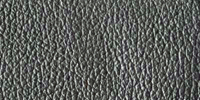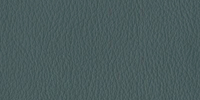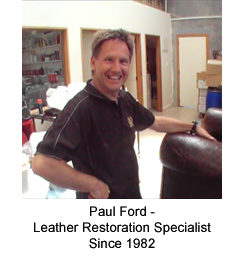How Leather Is Made/Processed In The Tannery ... Step By Step
To help you understand your leather better, here's a quick guide through the tannery.
1. THE ABATTOIR
Once the hides are removed from the cow, they are cured by soaking them in a salt solution. This is to stop them from deteriorating and going rotten. After this process, they are sent to the tannery.
2. LEATHER HIDES WASHED AND CLEANED
The salt solutions is washed off the skins. Then a lime solution is used to disolve hair, dung and any excess flesh. And I can tell you by experience ... the smell in this department is horrific!
3. SORTING ACCORDING TO DEFECTS
The hides are sorted according to the amount of defects they may have such as scarring, tick marks, barb wire marks and holes. Upholstery leather requires larger areas of unblemished hide, whereas other leather products such as shoes, saddles etc can utilise the smaller pieces. This is the reason why upholstery leather gets premium prices.
4. SPLITTING THE HIDES INTO LAYERS
Leather skins are very thick, so what the tannery does is split them into 2 and sometimes 3 layers, by passing them through machine which has a long sharp blade. Once split, the top layer, is put aside for upholstery leathers because it is the toughest and most flexible split. Whereas, the bottom layers are used for shoes and other products, and I've seen them also appearing on outside backs and arms of leather furniture!
5. TANNING THE HIDES FOR DURATILITY
The permanently preserve the leather and improve durability, they are soaked in a rotating drum with a special chemical. This process is often termed as Chrome Tanning.
6. THE LEATHER IS GRADED AND SORTED
Once tanned, the hides are sorted and graded according to their size, imperfections and quality.
7. DYING OF THE LEATHER
At this point, the leather is reloaded into large rotating drum, which contains dyes, oils and other chemicals to improve the strength, fastness and firmness of the hides.
8. THE LEATHER IS FORCE DRIED
At this stage in the process, the leather is soaked. It is toggled and stretched onto frames and hung in a large drying room where it is dried.
9. THE LEATHER IS EMBOSSED
Many hides will have imperfections which are often filled, sanded smooth, then passed through large hot rollers to print an artificial texture or grain.
Corrected Grain Leather

If you have seen leather that has an even grain and looks a bit like vinyl, then the chances are, it has gone through this process. This type of leather is 'CORRECTED GRAIN' leather and an example is shown in the picture on the right.
Full Grain Leather

Now 'FULL GRAIN' leather, on the other hand, is where none of the above process has been done. This means the surface is a lot softer and will show more of the natural imperfections of the leather. Here's a picture showing an example.
10. THE LEATHER IS SOFTENED
The hides are, what is termed, 'dry-drummed'. Which means they a loaded into a large rotating drum and tumbled for several hours. This loosens the fibres and softens the hides..
11. THE HIDES ARE COLOURED
The leather is put through an automated finishing machine, which sprays on the desired colour. Normally several coats are applied.
12. LEATHER SEALER
Once the colour is applied, a clear sealer is sprayed on for added durability. The lustre of this coating can be adjusted to give a high gloss, satin, or dull finish. The sealer has waxes and modifiers added to give the leather its feel qualities.
13. WAREHOUSED
The leather is finally graded according to quality, colour and weight. Each hide is then put through an automated measuring machine, to measure its area. Upholstery leather measures around 4.5 to 5 sqm.
Leather Hides Are Tested To Make Sure They Pass International Standards
A hide is randomly selected from a each batch of leather and undergo testing. The following are some of the major tests performed:
TEST 1:- Wet And Dry Rub Fastness
Upholstery leather should be able to stand up to normal use without the finish rubbing off. The rub fastness is tested by a machine where a piece of felt is rubbed back and forth against the leather. The felt must be able to rub across the leather a certain number of times without damaging the finish.
TEST 2:- Flexibility
A machine flexes a piece of leather thousands of times to simulate years of wear and tear. The leather is checked for cracking and splitting.
TEST 3:- Adhesion
The adhesion of the finish is tested by gluing a metal plate to a piece of leather. The force that is needed to remove the plate is measured.
TEST 4:- Tear Strength
The tear strength is tested by a machine that holds a piece of leather and pushes a metal probe into the leather. The amount of force needed to puncture the leather is measured.
TEST 5:- Abrasion
A piece of leather is put into a machine very similar to the one used to test rub fastness. Instead of using felt, a block with sandpaper is used.
Well, this is a quick overview of how leather is processed and, if you ever get a chance to go through a tannery, you will find it to be a fascinating place.
TEST 6:- Fade Resistance
A laboratory device is used to test the ability of the leather to resist fading.


